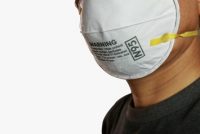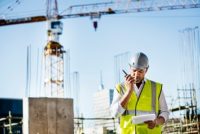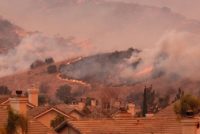Safety is a process, and as such, needs to be managed. This section offers resources to create a viable safety program, sell it to senior management, train supervisors and employees in using it, and then track and report your progress. Look also for ways to advance your own skills in these areas, both for your current job, and those that follow.
Why are there still shortages of N95 filtering facepiece respirators (FFRs)? Basically, when the coronavirus disease 2019 (COVID-19) pandemic was declared in March, a spike in demand for N95 respirators met a “just-in-time” supply chain. Both industry and government have moved to address shortages. COVID-19 is a respiratory disease caused by an infection of the […]
On September 15, the Occupational Safety and Health Administration (OSHA) issued revisions to its construction industry standard for cranes and derricks (85 FR 57109). The new clarifications and exemptions reflect situations in which Federal Railroad Administration (FRA) regulations preempt OSHA standards.
You may worry about a workplace outbreak of coronavirus disease 2019 (COVID-19) in your offices or facilities, but do you need to budget for upgrading your heating, ventilation, and air conditioning (HVAC) systems to hospital-grade standards?
On September 10, the National Institute for Occupational Safety and Health (NIOSH) issued a fact sheet and poster outlining tactics to ensure the safety of firefighters responding to row house fires. The institute recently completed a firefighter fatality investigation of a career lieutenant killed while fighting a row house fire.
The destructive wildfires throughout California have resulted in the loss of life and property and are stretching the resources to fight them. As we progress into late summer and fall, the danger will continue. Everyone must take precautions and stay aware of weather conditions to prevent human-caused fires. This is also the time to ensure […]
It takes clear, regular communication to drive the employee engagement required to build and maintain an effective safety culture at any organization. This is especially true as we continue to adjust to the “new normal” during the COVID-19 pandemic, with organizations of all shapes and sizes operating on a wide spectrum of models, from having […]
Even before a great many of us were working remotely, connectivity has been and will always be a key component of successful safety programs and healthy safety cultures. Open communication, engagement from employees and management, and effective change management all depend on connectivity, and technology can help facilitate all of these factors on which effective […]
While the world reels over the coronavirus pandemic, an inner battle is also underway. The U.S. Centers for Disease Control and Prevention (CDC) reports that anxiety and depression have increased significantly during April and June of 2020 compared with the same time period last year.
On August 31, AIHA (formerly the American Industrial Hygiene Association) released guidance documents and a white paper for employers trying to control workplace infections during the coronavirus disease 2019 (COVID-19) pandemic.
AIHA (formerly the American Industrial Hygiene Association) launched a new website—https://www.workerhealthsafety.org/first-responders—with occupational health resources about the long-term health risks faced by emergency responders. The website includes a case study of training to prepare first responders for rail emergencies and a directory of industrial hygienists and occupational and environmental health and safety (OEHS) professionals.










